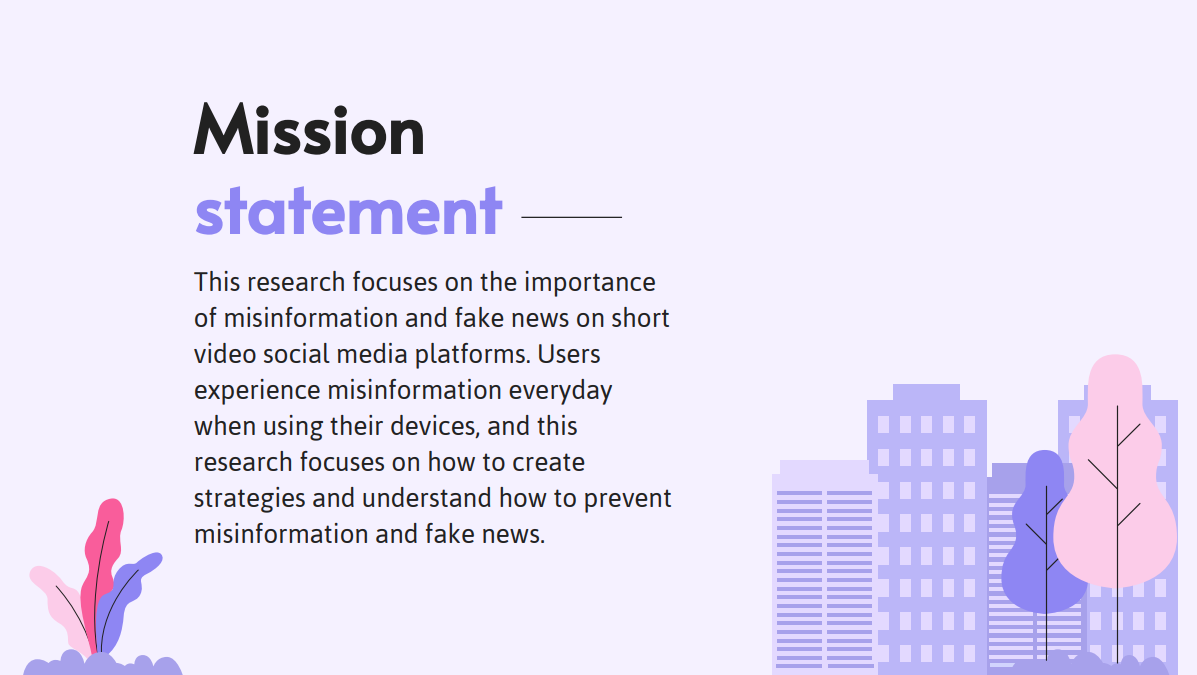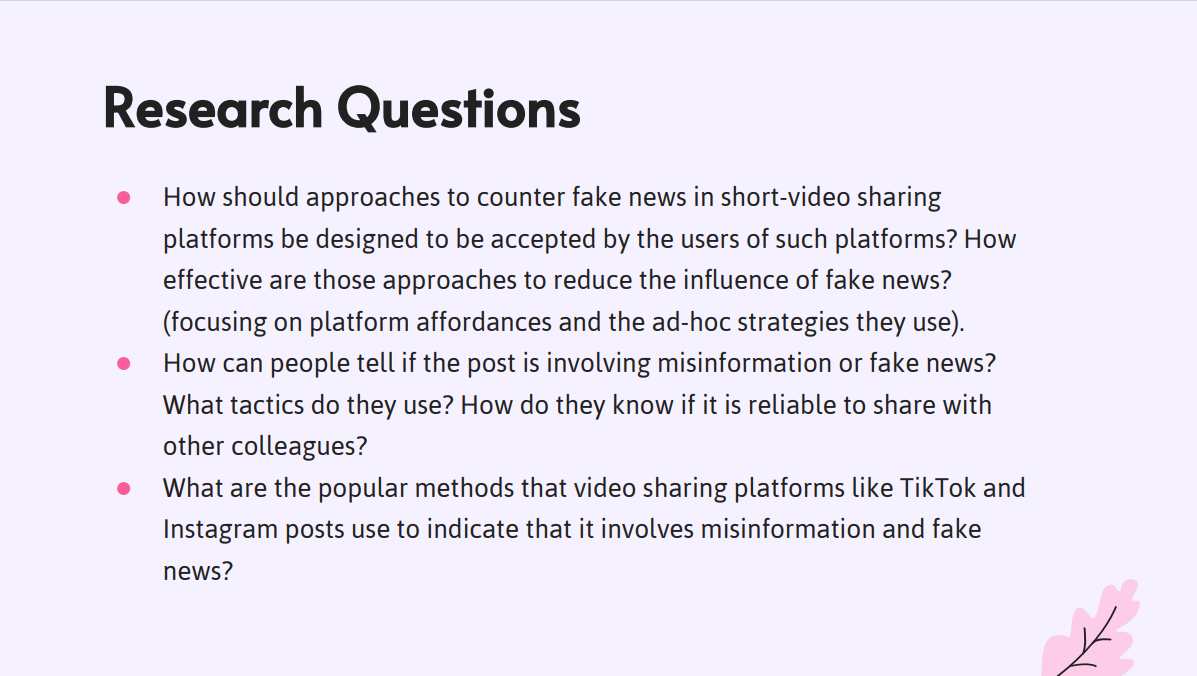
Project information
- Name: Misinformation/Fake News User Research
UX Research of Misinformation and Fake News on Social Media
This research was made through a User Exerpience class in the School of Media Arts and Design. Directed by Dr. Chen Guo, our goal was to research the influence and rise of misinformation and fake news around social media. We were tasked to research case studys, interview participants on their view on social media, and collect data of how misinformation is shown through short video platforms such as Instagram Reels and TikTok. The Final Report can be viewed Here.
Problem and Vision
Problem
In this generation, everyone is attached to their cellular devices. Since people are on their phone daily, it is very much likely that they have experienced some sort of misinformation and fake news on social media platforms. These issues are rising in social media whether it could be regarding politics, celebrities, or even medical research. It is important to find a way to decrease the amount of misinformation that is spreading across these platforms, and we need to find better strategies to prevent these posts from happening.
Vision
The goals aimed throughout this research is to study the human aspects of fake news and misinformation online. The aim is to find better ways to create strategies and methods of avoiding misinformation and fake news online. The hope is to find important information from literature reviews, peoples activity on social media platforms, conducting interviews, and screening surveys surrounding Instagram Reels and TikTok.

Misinformation and Fake News Final Report Learn More
Method & Approaches
Data Collection Procedures
When approaching this research, I asked myself some important research questions of how this project should be viewed. After creating the research questions, some key data collection methods that I have approached were:
- Questionnaire & Surveys
- Interviews
- Direct Observations
- Video/Audio Recordings
- Data Coding
- Documented Reviews

Research Process
Research Summary
The research started through creating a screening survey that was sent through emails, social media, and through family and friends. They were required to offer us information about their usage on social media, and how often they have experienced misinformation and fake news throughout social media. From then I had conducted a Semi-structured interview with two individuals that had completed the survey.
These individuals were asked to perform a think aloud operation during the interview. They were shown through a simulation of TikTok videos, and the goal was to see if they were able to identify what video invovled misinformation or fake news. A key feature that was added to the videos, was a warning/fact-checking alert attached to the video. They were able to identify which video had misinformation invovled in it. Some key points that were taken through this research were that people appreciate the usage of warnings attached to short videos, so that the viewer can be informed that the video could be a relation to misinformation and fake news.
Users are aware the spread of misinformation throughout the video sharing platform world. After showing the warnings within the videos from the interviews, they appreciated of how it assisted them to know that the video is misinformed. This is important because with a warning feature being more utilized in video sharing platforms, it can help a large amount to prevent misinformation throughout the social media world. This is something to take in consideration to the large companies of video sharing platforms. There should be more features that involves fact checking to help the user when viewing a video.